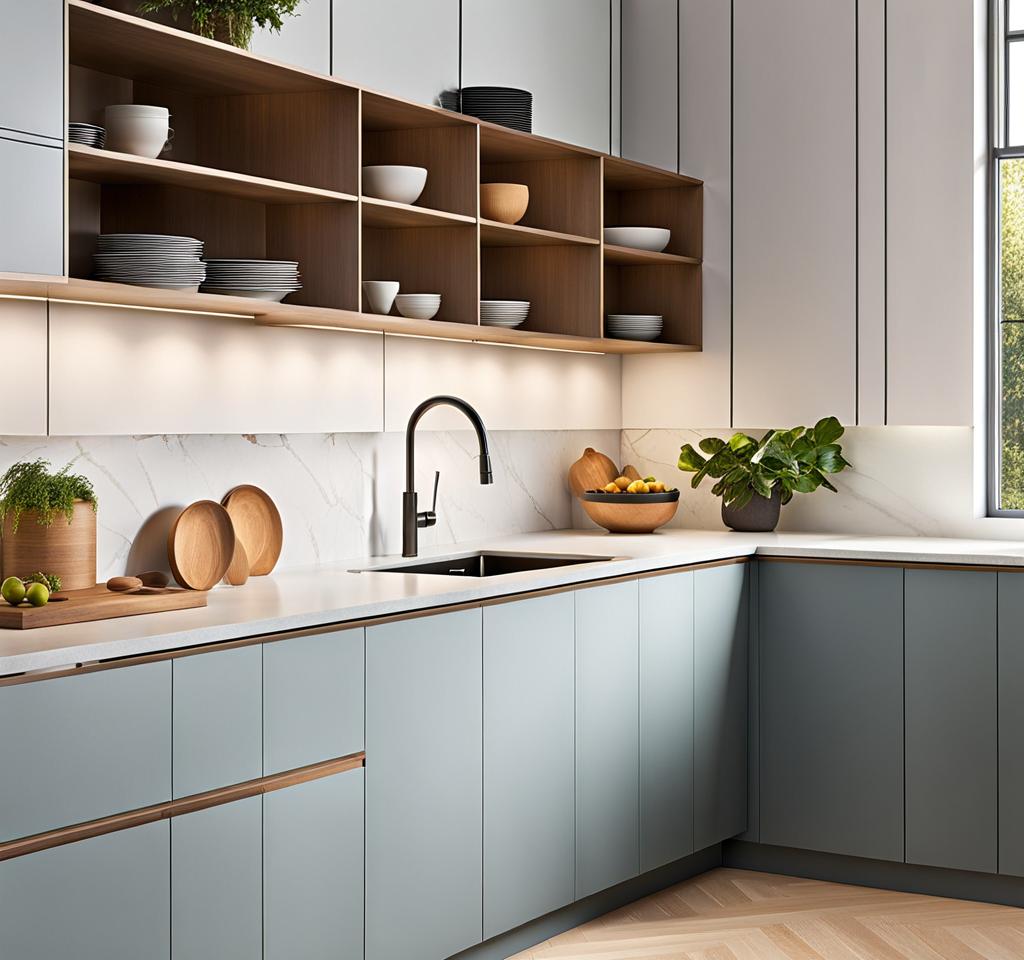When it comes to kitchen renovations, the handle placement on kitchen cabinets is an often overlooked detail that can make a world of difference. As the focal point of your cabinetry, handles play a crucial role in both functionality and aesthetics. Finding the perfect balance between style and ergonomics can elevate your kitchen’s overall design and user experience.
Importance of Handle Placement on Kitchen Cabinets
The positioning of cabinet handles may seem like a minor detail, but it has a significant impact on several aspects of your kitchen. Firstly, strategically placed handles can enhance the visual appeal of your cabinets, creating a cohesive and visually striking design. Secondly, ergonomic handle placement ensures comfortable usage, reducing strain on your wrists and arms during daily kitchen activities. Finally, well-thought-out handle placement contributes to the overall flow and harmony of your kitchen’s layout.
Factors to Consider for Optimal Handle Placement
When determining the ideal placement for your cabinet handles, several factors come into play. One crucial consideration is the cabinet height and user accessibility. Handles on base cabinets should be positioned at a comfortable height for most users, while wall cabinet handles should be within easy reach. Additionally, the size and weight of your cabinet doors play a role in handle placement, as heavier doors may require a different grip position for easy opening and closing.
Coordinating handle placement between multiple cabinets is also essential for a seamless and visually appealing design. Whether you opt for a uniform or staggered pattern, ensuring consistent alignment across your cabinetry creates a sense of order and cohesion. Furthermore, aligning your new handles with existing hardware and appliances can help maintain a harmonious overall aesthetic.
Popular Handle Placement Options
When it comes to handle placement, homeowners have a variety of options to choose from. The most common choices include horizontal or vertical orientation, with horizontal handles being the traditional and classic option, while vertical handles offer a more contemporary and sleek look. Additionally, you can opt for centered or offset positioning, depending on your personal preference and the overall design of your cabinets.

Another factor to consider is the placement of handles on drawers versus cabinet doors. While drawer handles are typically centered for ease of use, cabinet door handles can be placed in various positions, such as towards the top, bottom, or sides, depending on the desired aesthetic and functionality.
In recent years, trendy styles like integrated finger pulls have gained popularity, offering a minimalist and seamless look for modern kitchen designs. These handle-free options can create a sleek, uninterrupted cabinet surface while still providing a functional grip.
Measurements and Guidelines for Precise Installation
Achieving the perfect handle placement requires precise measurements and adherence to established guidelines. Generally, standard handle heights for base cabinets range from 28 to 36 inches, while wall cabinet handles are typically positioned between 54 and 64 inches from the floor. However, these measurements can vary based on personal preferences and the specific needs of your household.
When determining the ideal distance from cabinet edges, a general rule of thumb is to leave approximately 3 to 4 inches of space from the edge to the handle center. This distance ensures a comfortable grip and prevents knuckles from hitting the adjacent surface. Additionally, it’s crucial to account for overlapping cabinet door clearance, especially in tighter spaces or corner cabinets.
If you have custom cabinet designs or unique layouts, you may need to adjust the handle placement accordingly. In such cases, it’s advisable to consult with a professional cabinet installer or designer to ensure optimal functionality and aesthetics.
Coordinating Handle Style with Kitchen Design
Beyond functional considerations, handle placement also plays a significant role in complementing your overall kitchen design. Matching handle finishes and materials with your cabinetry can create a cohesive and visually appealing look. For instance, sleek stainless steel handles can accentuate modern, minimalist designs, while rustic wooden handles can enhance the warmth of traditional or farmhouse-style kitchens.
When selecting handles, it’s essential to consider how they complement the colors and textures of your cabinets. A contrasting handle finish can add depth and interest, while a harmonious match can create a seamless and sophisticated appearance. Additionally, incorporating the handle design into your overall kitchen theme can help tie the entire space together, whether you’re aiming for a contemporary, traditional, or eclectic aesthetic.
Balancing modern and traditional aesthetics can be achieved by carefully selecting handle styles that bridge the gap between these two design philosophies. For example, combining clean lines with vintage-inspired details can create a unique and captivating fusion.
Once you’ve determined the perfect handle placement and style, you’ll need to decide whether to tackle the installation yourself or enlist the help of a professional. For those with the necessary tools and experience, DIY handle installation can be a rewarding and cost-effective option. However, it’s essential to have the proper tools, such as a drill, level, and measuring tape, as well as the ability to follow precise instructions.
Professional cabinet installers, on the other hand, bring their expertise and experience to the table, ensuring a flawless installation process. They can provide valuable guidance on handle placement, make recommendations based on your specific kitchen layout, and handle any unexpected challenges that may arise during the installation.
Whether you choose the DIY or professional route, it’s crucial to take accurate measurements and carefully mark the handle locations before drilling any holes. This step ensures that your handles are evenly spaced and properly aligned, contributing to the overall aesthetic appeal of your kitchen.
Troubleshooting common installation challenges, such as misaligned holes or stubborn screws, is also an important aspect of the process. If you encounter any issues during the installation, don’t hesitate to seek advice from professionals or consult online resources for helpful tips and solutions.

This is where you’ll find inspiration to create a stylish and beautiful dream home.